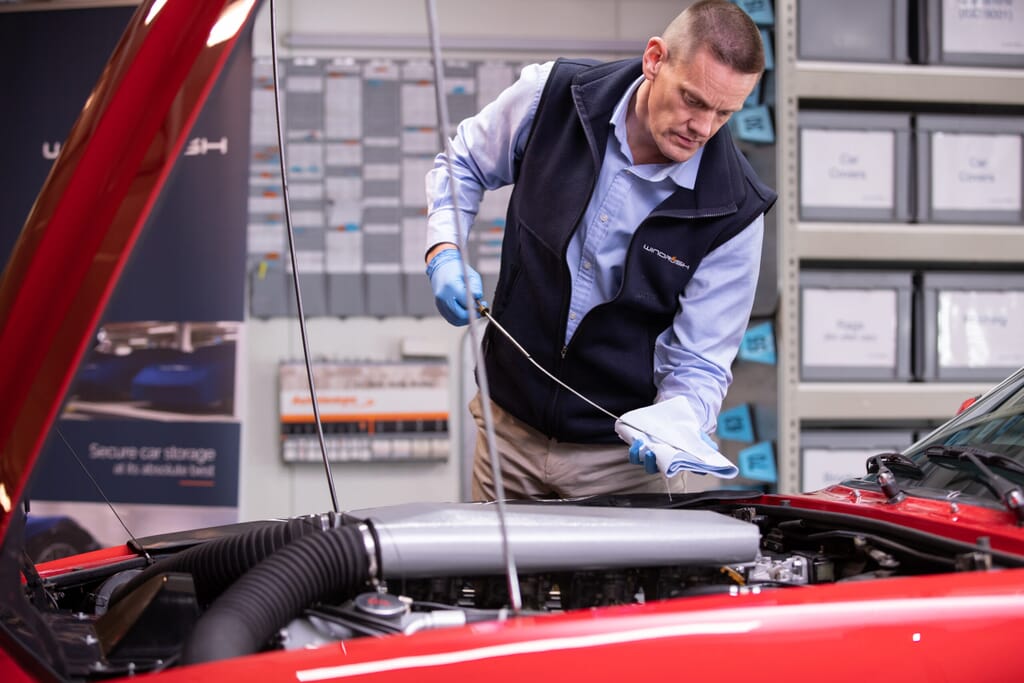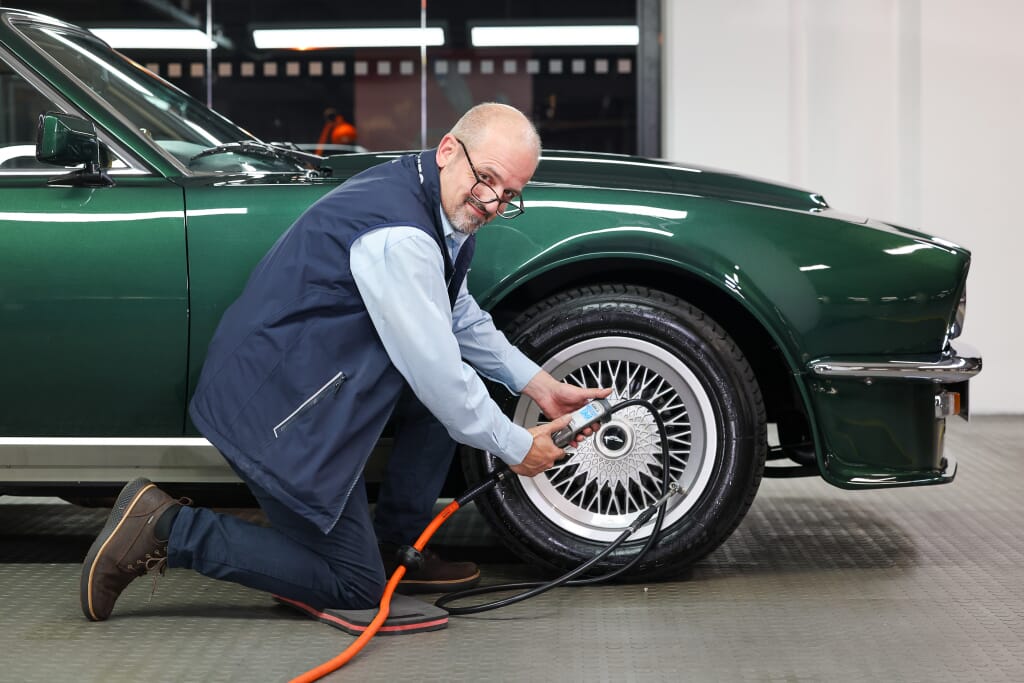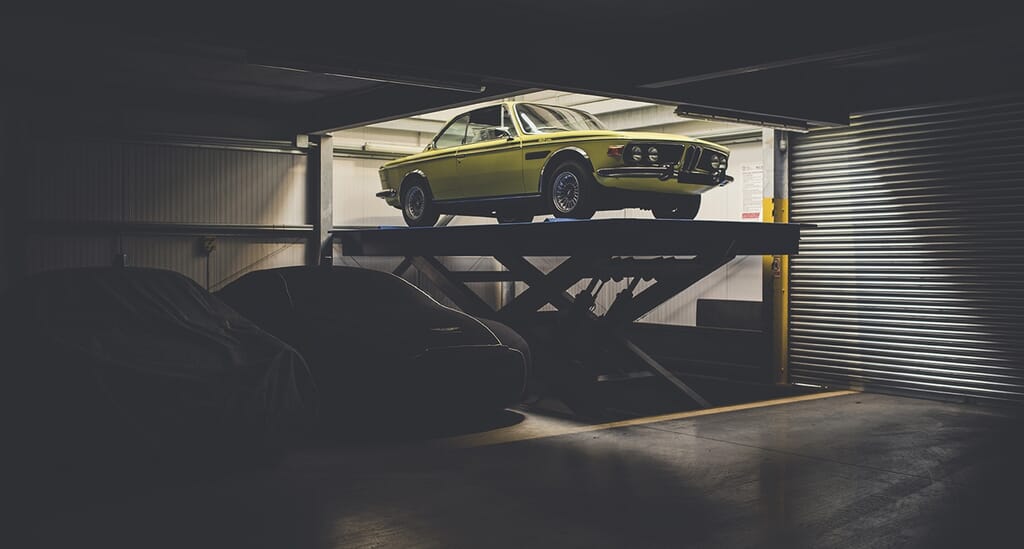
On first inspection, your car is all ready for the big sleep. But while the cosmetics might be impeccable – clean, dry and buffed to a sheen – it’s vital you don’t neglect the mechanical componentry beneath the surface. Out of sight shouldn’t mean out of mind, and Windrush makes it our business to keep these inner elements running like clockwork during long term car storage.
Left to fend for themselves, your car’s core mechanicals will go downhill fast due to common issues ranging from internal corrosion to the havoc wreaked by stagnating oil in the system. Here’s how Windrush’s long term car storage team keeps your vehicle match-fit, even when off the road.
Change the Oil & Filter

During extended periods of inactivity, engine problems can arise due to the deterioration of oils caused by contamination, oxidation and breakdown in use. Engine oil retains water and acids as by-products of combustion and that’s a problem during downtime, causing inactive internal surfaces to corrode as their protective coating wears down. Used oil gets worse with age, too, because its damage-preventing additives lose effectiveness. As such, an oil and filter change prior to long term car storage is essential.
Run the vehicle regularly

You might think you’re giving your engine a well-earned rest, but stasis is deadly. During long term car storage, make a point of firing up the engine at least every other month, thereby recirculating the oil to keep the internal surfaces protected and the engine belts running smooth. At Windrush long term car storage, we’ll not only keep your engine ticking over but check in on clutches, gearboxes and brakes to stop rust bonding to friction surfaces and particularly susceptible cast iron parts. Of course, we’ve already got a head start thanks to the dehumidified environment at our London and Cotswolds facilities. If you’ve working with a draughty garage, it’s time for a rethink.
Keep pistons lubricated with fresh

Pistons are another potential weak link of an inactive engine. If your car won’t be seeing daylight until spring, we’d suggest removing the spark plugs and pouring a small slug of good-quality engine oil (aim for the amount that would fill an eggcup) down each of the bores in order to lubricate the pistons upon initial run up. Consider disabling the ignition and allowing the engine to spin freely on the starter motor with no load until the oilways are re-filled and pressurised. Then start it up properly and listen out for smooth running.
Run it out right

Limbering up your engine is not quite as simple as turning the key in the ignition. Many owners will start their car, briefly leave it to idle then put it back into storage. Don’t do that: you’ll just invite moisture-laden air into the engine and exhaust system, setting these elements up for deterioration and failure.
A better tactic is to take the car out for a short drive of ten minutes or so, working through all the gears and giving the clutch and brakes a light workout. Needless to say, this won’t do your vehicle any good when winter roads are thick with rain, ice or salt. Fortunately, Windrush’s long term car storage service has the solution in the form of our internal rolling road.
Or leave it all to Windrush classic car storage
When the checklist to prepare your car for storage feels overwhelming, there’s always the easy option. Come to Windrush prestige car storage in the Cotswolds and Central London. Whatever you drive – from modern supercar to lovingly maintained vintage – our long term car storage team tailors our service for the best results, inside and out.
Simply hand over to Windrush and we’ll start our twelve-step induction process. Then step away in the knowledge that our ongoing maintenance schedule – adapted to your vehicle – will continue in your absence. However long you’re staying with us, rest assured that whenever you collect the keys, your vehicle will be in the form of its life. That’s the Windrush difference.
To learn more about Windrush luxury car storage, drop the team a line on info@windrushcarstorage.co.uk




